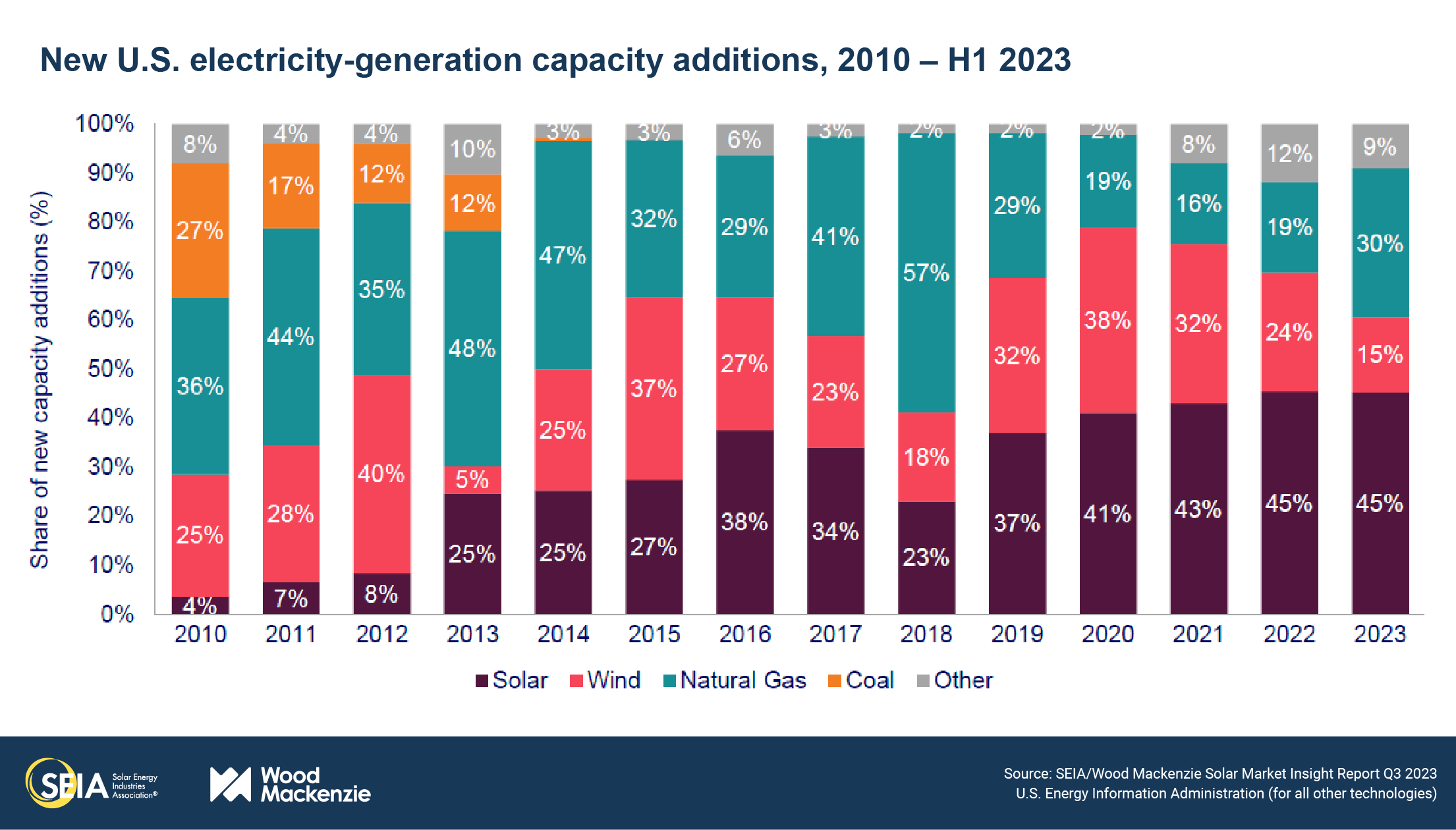
WASHINGTON D.C. — The U.S. solar industry expects to add a record 32 gigawatts (GW) of new capacity in 2023, a 52% increase from 2022, according to the U.S. Solar Market Insight Q3 2023 report released today by the Solar Energy Industries Association (SEIA) and Wood Mackenzie.
The solar market has been hampered in recent years by supply chain challenges brought on by the COVID-19 pandemic and exacerbated by restrictive trade policy. These challenges are beginning to abate, and as policies in the Inflation Reduction Act (IRA) take hold, Wood Mackenzie expects total operating solar capacity to grow from 153 GW today to 375 GW by 2028.
“The United States is now a dominant player in the global clean energy economy, and states like Florida, Texas, Ohio, and Georgia are at the forefront of this job growth and economic prosperity,” said SEIA president and CEO Abigail Ross Hopper. “The solar and storage industry is delivering abundant clean energy that is generating tens of billions of dollars of private investment, and this is just the tip of the iceberg.”
A surge of new domestic manufacturing investments is also expected to improve supply conditions over the next few years. If these factory announcements materialize, by 2026 U.S. solar module manufacturing output will be ten times greater than it is today.
The utility-scale and residential solar markets led the way with new capacity additions in Q2, growing by 3.3 GW and 1.8 GW, respectively. This marks the largest quarter of growth for the residential solar market in history as customers in California rushed to install solar before changes to net metering rules took effect.
“In the year since its passage, the IRA has undoubtedly caused a wave of optimism across the solar industry. Announcements for domestic module manufacturing have exploded, promising more stable solar module supply in the future,” said Michelle Davis, Head of Global Solar at Wood Mackenzie. “Now the challenge becomes implementation — the industry is waiting for clarity on several IRA provisions before moving forward with solar investments.”
The commercial solar market declined in Q2 primarily due to project interconnection backlogs and a hesitancy to move forward with projects before having full clarity on the IRA’s tax credit adders. Despite these challenges, increasing energy prices in certain states is driving demand in the commercial solar market, and the sector is expected to grow by 11% in 2023.
Florida continues to dominate the 2023 state solar rankings, installing 2.5 GW of new capacity in the first half of this year. This is 52% more than the next highest state of California, and already more solar capacity than Florida has ever installed in a single year.
Learn more at seia.org/smi.
News update from SEIA.
Read the Latest Report
Click here to read the Executive Summary of the latest Solar Market Insight Report. The full report includes all the data and analysis from our Executive Summary plus incisive, state-level breakdowns of installations, costs, manufacturing and demand projections. To learn more about the Solar Market Insight Report series, click here.
I don’t like paywalls. You don’t like paywalls. Who likes paywalls? Here at CleanTechnica, we implemented a limited paywall for a while, but it always felt wrong — and it was always tough to decide what we should put behind there. In theory, your most exclusive and best content goes behind a paywall. But then fewer people read it! We just don’t like paywalls, and so we’ve decided to ditch ours. Unfortunately, the media business is still a tough, cut-throat business with tiny margins. It’s a never-ending Olympic challenge to stay above water or even perhaps — gasp — grow. So …





